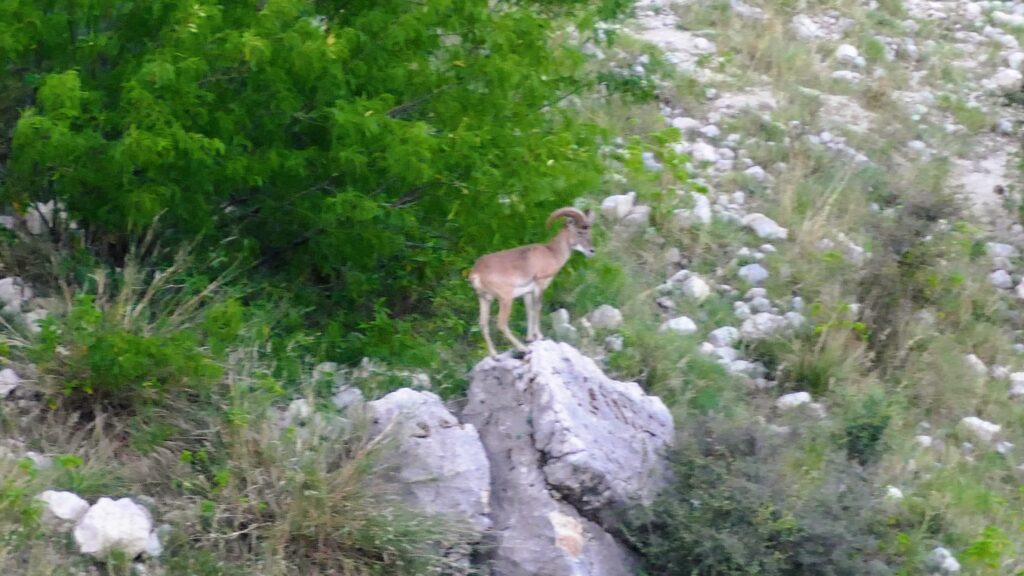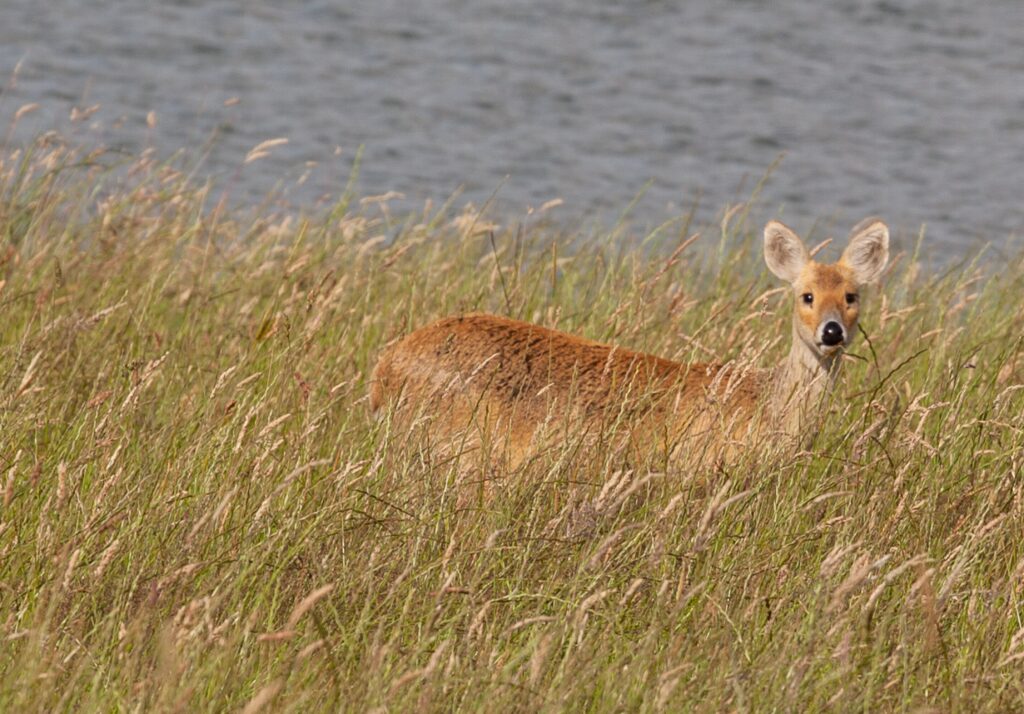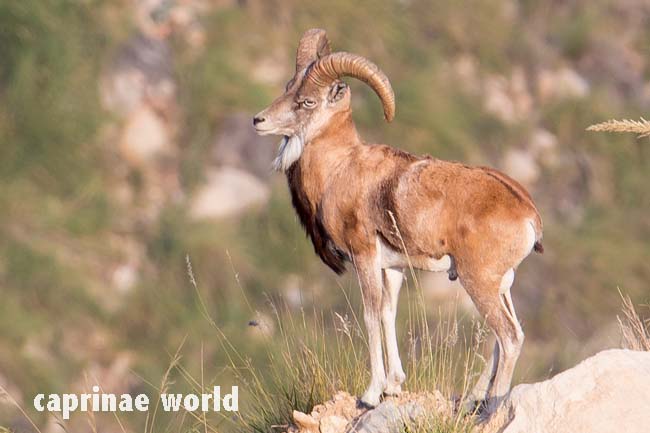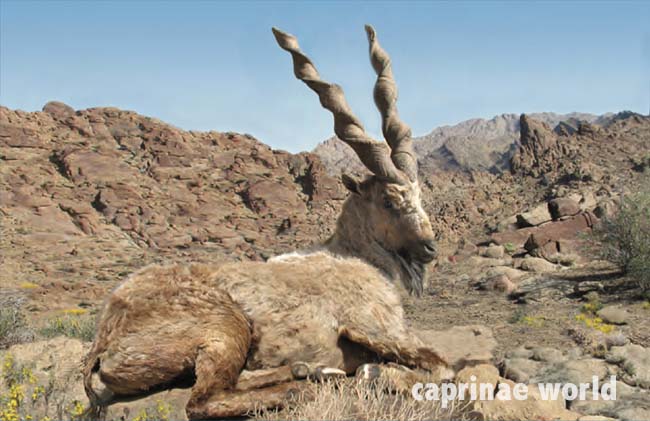In between Pakistan’s snow-capped Himalayas and the scorching Thar desert lies a small mountain range that is unknown to most foreigners. These low, but rocky mountains are called the Salt Range because millions of tons of the famous pink Himalayan salt are buried underneath the ground here. But for us the Salt Range is interesting for another reason: It is the only home of the endemic Punjab Urial (Ovis vignei punjabiensis). The Punjab Urial, named after its home region, is a subspecies of the ungulate urial that occurs across Central Asia and the Himalayas. To learn more about the Punjab Urial, we meet Zahid Ali, Deputy Director of the Punjab Wildlife Department for the Salt Range, and his team.


We arrive in their district office in Chakwal and after a warm welcome in the evening, and the next morning we set out very early to Dhoke Sillah (named after the abundance of pangoline there locally known as sillah), part of Chumbi Surla Wildlife Sanctuary to find urials just after sunrise, the time they are most active during this hot time of the year. And thanks to the experience of the officials of the Wildlife Department, we quickly spot the first urial. We are immediately in love with the beige mountain goats that have a dense, shiny fur and – only the males – thick, curled horns. In this landscape of bare rocks and lose bush cover, they are easiest to spot when they stand on ridges or other exposed areas, observing their surroundings. Unfortunately, the Pakistani sun is already merciless in May and after not too long, we and the urial have to seek shelter from the heat. Nevertheless, we try our luck again later that day and next morning, and to our astonishment, once our eyes get a little bit used to spotting these slender ungulates, urials are in abundance everywhere we look.



Tackling poaching
Back in the office of the Wildlife Department, we talk about its work and unfortunately the conversation naturally lands on the topic of poaching. As confirmed in the Cholistan Desert and other parts of Pakistan, this is the biggest issue that the Wildlife Department faces across the country. Zahid Ali tells us that two of his officials were killed by poachers while on duty and we hear plenty of stories of officers being injured, which is why many of them wear firearms for personal protection. They also tell us that the police support them during raids and other dangerous activities. However, Zahid Ali emphasizes that prosecution improves and poaching numbers drop due to the usage of new technologies and the involvement of locals. On this very day, Zahid Ali came to this specific district office to teach his rangers how to use the SMART app to monitor wildlife in the region and improve the departments operations. Another important factor for success is the engagement of locals as informants who receive money for their services, but remain anonymous.

Trophy hunting as a funding mechanism
Also like in many parts of Pakistan, trophy hunting plays an important role in conservation. Due to its limited range and population, the Punjab Urial is popular amongst trophy hunters and a hunting permits are currently awarded after open bidding for around 20005 USD. From inception of Urial trophy hunting in 2010 until now, 132 hunting licenses were issued in this region , all inside of four community-based conservancies (CBC) as hunting in protected areas is completely prohibited.
Will more ungulates attract predators?
The success of the Wildlife Department’s work is proven by the population development of Punjab Urial in the district. In only twelve years, from 2010 to 2022, direct sightings of the species have increased from 200 to almost 2000 individuals. This development immediately raises the question in our heads whether this will contribute to the return of large predators, which are completely extinct in the Salt Range. Not far from here, on the foothills of the Himalayas around Islamabad and in the Kashmir region, leopards have recently resettled in the area and reproduce successfully. But Zahid Ali tells us that there is no acceptance for large predators here, so he thinks a return is unlikely, or at least problematic, in the Salt Range.
The future of Punjab’s ungulates
After talking about the Wildlife Department’s general work, we turn towards Zahid Ali’s personal passion project and the biggest ever project of the Punjab Wildlife Department out of the Annual Development Programme. Starting. Starting in July 2023, the department conducts a large-scale reintroduction of native ungulates and game birds. Upscaling the lessons from the successful Punjab Urial conservation based on community conservation, seven (sub-) species of ungulates and three bird species will be reintroduced from captivity across Punjab. This is not only an effort to bring back these species, but also to systemically involve communities in conservation and create economic incentives and benefits for them.
The first step within the project will be to set up 25 new community-based conservancies (CBCs) in addition to the existing ones. Divided across these CBCs, the animals will be released, in total 5 males and 20 females of each of the following (sub-) species:
- Hog deer
- Nilgai
- Blackbuck
- Chinkara
- Punjab Urial
- Afghan Urial
- Suleman Markhor
For this purpose, 20 ha of pre-release pens will be built, where the animals will spend up to one year. Here, the released animals will get used to life in the wild and reproduce. The goal is to keep a stock of reproducing population and release mostly the offspring born in the pens, namely 8 females and 2 males per CBC & year. Furthermore, around 200 private game reserves and private wildlife breeding farms will be involved in providing individuals for release. The project will run for five years and the Wildlife Department estimates that the population of each (sub-) species will grow to at least 100 individuals within this time. After the initial breeding and release, the Wildlife Department will monitor the released animals using GPS collars, provide veterinary care, logistics, fodder and water infrastructure. At least one individual in each herd will get a collar and virtual fencing with signal transmission every six hours will be used.
Educating & incentivizing locals
The rest of the work will be done within the CBCs, actively involving local communities. To teach them the necessary skills, the Wildlife Department will hold training sessions specifically tailored for hunters, communities and breeding farms. To incentivize the CBCs, the Wildlife Department will provide them payments in place of trophy hunting revenues until the populations are big enough to start trophy hunting. This means that the population must be at min. 300 individuals, which will take at least seven years, so two years after project completion. After that, 2% of the total population or 25% of the ‘huntable’ population, meaning old males that are not important for reproduction, can be hunted yearly. The income generated must be spent on community services, which will be controlled by the responsible agencies.
Challenges & Successes
Of course, a massive project like this presents challenges. Moving animals from breeding centers to pre-release pens and habituating them to a new environment plus life in the wild involves a high risk of mortality. But Zahid Ali emphasizes that they developed successful ways of capturing and transporting individuals. This includes leaving trucks in the enclosures to get the animals used to them and cushioning them during transport, which lasts no more than four hours.
In the Cholistan desert, we learned that a pilot project supported by Pak Army, Rangers and the Forest Department has already been started and a few black bucks have been released from the breeding center that the Wildlife Department has run in Lal Suhanra National Park since the 80s. After blackbucks were completely extinct from the Cholistan desert, by now the population has grown to 43 animals thanks to two releases. The preliminary success there, the achievements in Punjab Urial conservation in the Salt Range and the political support of the Punjab government, that funds the project worth 1.5 billion Pakistani rupees (currently 5 Mil. €)on its own, make us hopeful that this large-scale reintroduction will be successful and the ungulates will once again inhabit the landscapes of Punjab.







